David Suzuki's Blog, page 29
August 26, 2016
Thousands offer climate change ideas
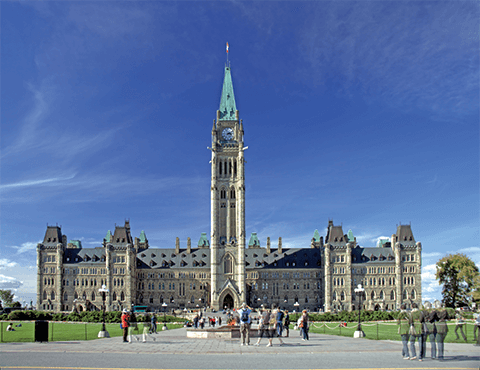
(Credit: A Yee/Flickr)
We hear it from you all the time: You want Canada to act on climate change.
When the federal government asked for Canadians' ideas on climate change, we jumped at the chance. We made it easy for our supporters to respond. In just three weeks, more than 3,500 Canadians visited the government's survey website.
Comments went to decision-makers at the highest levels. Commenters said Canada should invest in renewables, curb emissions, boost energy efficiency and put a price on carbon.
Your support mobilized the community you helped build to demand action. Thank you!
Hey! Want more DSF? Join David Suzuki on Facebook

You make better transit possible
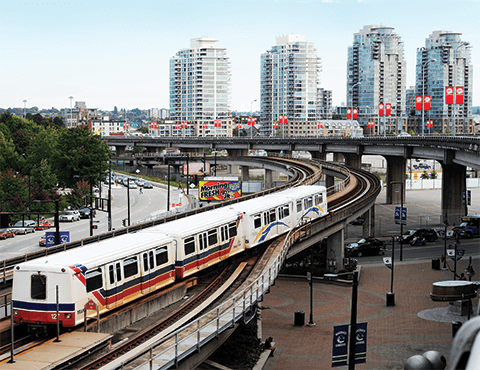
(Credit: Tim Adams/Flickr)
Without funding, buses, subways and bike lanes can't keep up with population growth. The quality of service declines. Frustrated people go back to their cars. Traffic congestion increases.
For Canada to meet its climate targets, we need more public transit.
Governments make promises to build this transit infra-structure. Thanks to you, we're being watchdogs and holding their feet to the fire.
We looked at the last eight years of B.C. budgets and learned spending has been far below commitments. B.C. had a great transit plan. It just didn't put enough money into it.
Then the federal government stepped up. It promised to spend billions of dollars across the country on regional transit.
With your help, we'll keep talking to federal government representatives to make sure they live up to their pledge. And we'll help provincial and regional governments communicate why transit investments are important.
Now major new transit projects in Montreal, Toronto and Vancouver are possible. People need to get behind them. That's where you come in! Create demand: Ride transit. Write decision-makers: Tell them you want more transportation options. (Stay tuned! We'll help.)
Hey! Want more DSF? Join David Suzuki on Facebook

August 25, 2016
Suzuki Superhero Challenge

Children today spend less time outdoors than any generation in human history. They're also our future superheroes -- so we need to make sure they're well equipped to protect our planet!
Hey! Want more DSF? Join David Suzuki on Facebook

How much food can cities produce?
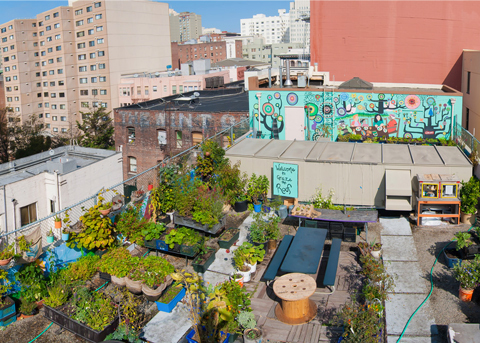
(Credit: SPUR via Flickr)
Humans are fast becoming city dwellers. According to the United Nations, “The urban population of the world has grown rapidly from 746 million in 1950 to 3.9 billion in 2014.” Sixty-six per cent of us will likely live in urban environments by 2050. The number of mega-cities (more than 10 million inhabitants) is also skyrocketing, from 10 in 1990 to 28 in 2014 — home to more than 453 million people — and is expected to grow to 41 by 2030.
Along with concerns about climate change and the distances much of our food travels from farm to plate, that’s spurred a renewed interest in producing food where people live. Urban agriculture won’t resolve all food production and distribution problems, but it could help take pressure off rural land while providing other advantages. From balcony, backyard, rooftop, indoor and community gardens to city beehives and chicken coops to larger urban farms and farmers markets, growing and distributing local food in or near cities is a healthy way to help the environment.
And it’s much more. As writer and former Vancouver city councillor Peter Ladner (also a David Suzuki Foundation board member) writes in 2016 study from the U.S. Johns Hopkins Center for a Livable Future found that urban agriculture could “increase social capital, community well-being, and civic engagement with the food system,” as well as enhance food security, provide ecosystem services, improve health and build residents’ skills. Gardening is also therapeutic.
The study found many climate benefits, including reduced emissions from transporting food; carbon sequestration by vegetation and crops; possible reduced energy, resource inputs and waste outputs; and enhanced public interest in protecting green spaces. It also noted some limitations: possible increases in greenhouse gas emissions and water use “if plants are grown in energy- or resource-intensive locations”; less efficiency than conventional agriculture in terms of resource use and transportation emissions; and, depending on practices, pollution from pesticide and fertilizer use. The study found urban agriculture to be positive overall, but concluded support from all levels of government is required to make it viable.
Urban agriculture isn’t new. During the First and Second World Wars, Canada, the U.S., the U.K., Australia and Germany encouraged “victory gardens” to aid the war effort by reducing pressure on food systems and farms. Gardens and chicken coops appeared in yards, parks, school fields, golf courses, railway edges and vacant lots. Sheep grazed on sports fields and kept grass in check. Peter Ladner notes that, during the Second World War, the U.K. had 1.5 million allotment plots producing 10 per cent of the country’s food, including half its fruit and vegetables; and by war’s end, more than 20 million home gardens supplied 40 per cent of U.S. domestically consumed produce.
Granted, there were fewer people and more open spaces then, but it’s still possible to grow a lot of food in urban areas, especially with composting and enriched soil techniques. Ladner writes that Toronto plans to supply 25 per cent of its fruit and vegetable production within city limits by 2025, and a study from Michigan State University concluded Detroit could grow 70 per cent of its vegetables and 40 per cent of its fruit on 570 vacant lots covering 5,000 acres of city land.
One patch of Detroit land where 12 vacant houses were removed to grow food has supplied almost 200,000 kilograms of produce for 2,000 local families, provided volunteer experience to 8,000 residents and brought the area new investment and increased safety.
Cities needn’t be wastelands of car-choked roads and pavement. Incorporating food production into ever-expanding urban areas makes cities more liveable and enhances the natural systems that keep us alive and healthy.
By David Suzuki with contributions from David Suzuki Foundation Ontario and Northern Canada Director Faisal Moola.
Hey! Want more DSF? Join David Suzuki on Facebook

August 22, 2016
Ontario's Oxford County a renewable energy pioneer
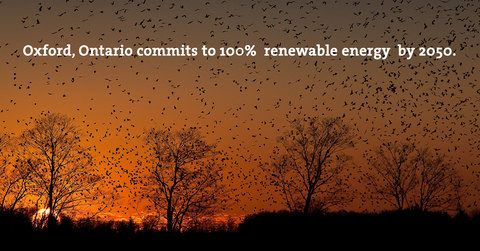
(Credit: Eric Malette via Flickr)
Jay Heaman is passionate about renewable energy. An electrician by training, he worked for the local electricity distributor in Woodstock, Ontario, for 27 years. The job he now holds -- manager of strategic initiatives for the County of Oxford -- allows his passion free range.
In June 2015, Oxford (which is between Hamilton and London) passed a motion committing itself to 100 per cent renewable energy for electricity, heating and transportation by 2050. It's the first municipality in Ontario to make this promise. (Oxford won't ban fossil fuels but any used will be offset by renewables, resulting in net-zero carbon emissions.)
The most exciting part, Heaman argues, is that the decision was unanimous. All county mayors and councillors voted in favour of the 100 per cent renewables requirement.
Art Gibson, who sits on the steering committee of Smart Energy Oxford -- a pro-renewables coalition of businesses, citizens and municipalities -- says support is broad not just among politicians but also the general public. "This is the dairy capital of Ontario; it's a conservative area, but they're buying in," he says. "When the county does educational fairs [on renewables] they get 400 or 500 people out, at least."
Heaman says Oxford's bold decision came in the context of an extensive 18-month debate the county undertook on sustainability in general. "The idea of 100 per cent renewables surfaced during stakeholder discussions," he says, adding that excitement also grew during a May 2015 environment conference in Vancouver, which Oxford councillors enthusiastically attended. "The City of Vancouver had committed to renewables, so the question for us became, 'Could Oxford go this route as well?'"
The county government promotes renewables in a variety of ways, including owning and operating solar panels on public buildings. This has multiple benefits. The panels enhance the buildings' values and mean the county is effectively in the electricity-generation business. "We were one of the first municipalities to get into this," says Melissa Abercrombie, the county's manager of roads and facilities. The power is sold into the grid and provides Oxford with revenue; six small projects generated $45,000 in 2015. As well, because the solar-power systems are installed by companies based in the region, they foster local job creation.
The county is also considering what it calls the "Solar Oxford Challenge". It would ask citizens to cut their energy use by up to 50 per cent over a year, then satisfy their remaining electricity needs by mounting two- to three-kilowatt solar panels on the roofs of their homes. Residents could purchase the panels with the help of county-backed low-interest loans.
Heaman believes Oxford's new policy is about more than providing power. The conversation begins with energy generation but then moves to efficiency. Residents start thinking about how they can retrofit their houses, how they can consume less. The process also engenders what he calls "energy democracy" -- the notion that electricity production is not just the domain of large centralized facilities but can be undertaken by individuals and co-ops. "People come to realize, for example, that if they have an electric vehicle they can create 90 per cent of the power for their transportation right off their own roof [with solar panels]." The move to renewables is sparking a broader change in culture.
Local governments have a long history of being environmental leaders. Years before many provinces banned lawn-and-garden pesticides, for example, use of these poisons was regulated by some of Canada's municipalities. After then-U.S. president George W. Bush rejected the Kyoto Protocol in 2001, hundreds of American mayors said they would strive to fulfill its terms themselves. The David Suzuki Foundation hopes Canadian towns and cities will take inspiration from Oxford county and realize that they, too, can go 100 per cent renewable. Doing so will help them meet climate targets, generate income and create good, meaningful jobs.
Hey! Want more DSF? Join David Suzuki on Facebook

How to make non-toxic dog shampoo

Store bought pet products are loaded with toxic ingredients like parabens, SLS/SLES, and fragrance. (Credit: Laura Milne)
You read ingredient lists on personal care products to avoid the Dirty Dozen. But parabens, SLS/SLES and fragrance also lurk in pet products -- from shampoo to ear wash and tooth gel.
Shop smarter. Avoid ingredients which may cause cancer, interfere with hormone function and harm fish and other wildlife.
Next time your dog rolls in it make dog shampoo:
Dog shampoo recipe
Time needed: five minutes
Shelf life: approximately one month
177 ml (¾ cup) water
60 ml (¼ cup) liquid castile soap
15 ml (1 tbsp) aloe gel (optional)
5 to 10 drops essential oil (optional) Try any combination of anti-flea essential oils including rosemary, lavender, peppermint, eucalyptus, spearmint and citronella.
Combine ingredients in a squirt bottle. Shake before each use. Avoid the eye area. Rinse well.
If you don't have essential oils, buy lavender, tea tree, eucalyptus or peppermint liquid castile soap. If you grow garden herbs, substitute peppermint and rosemary tea for the water.
What about stinky skunk encounters?
After shampooing, try this conditioner:
Combine one part vinegar (white or apple cider) to five parts water in a bottle. Pour over the dog, careful to avoid eyes, and rinse.
Get ready for compliments at the dog park!
Comment with tips that lower your dog's eco-paw print to enter to win Greening Your Pet Care: Reduce Your Animal's Environmental Paw Print by Darcy Matheson and The Pet Poo Pocket Guide by Rose Seemann. (Draw date: September 19.)
Sincerely,
Lindsay Coulter, a fellow Queen of Green
Hey! Want more DSF? Join David Suzuki on Facebook

Join forces: Become an Ocean Keeper!

Join thousands of Canadians like you who care about protecting the oceans you love and depend on. Become a David Suzuki Ocean Keeper today!
We'll get you started with ocean-friendly habits you can put into action at home right away. Many people making small daily changes can add up to a BIG difference.
As an Ocean Keeper, we'll work with you to provide opportunities and boost the skills you need to protect the coast you love, such as:
Getting letters published in your local paper
Posting effective social media content
Hosting events with kids or adults
Influencing your elected representatives
When you take part in Ocean Keepers, you'll know you aren't alone. There will be thousands of others who care working alongside you!
YES, SIGN ME UP TO BE AN OCEAN KEEPER!
Hey! Want more DSF? Join David Suzuki on Facebook

August 19, 2016
David Suzuki Foundation news release: B.C. hesitates when it should lead on climate action
VANCOUVER -- The first phase of the B.C. government's updated climate action plan, released today, fails to put the province on track to meet its emissions targets or commitments under the Paris Agreement.
"B.C. had a chance to show real leadership on climate action, so we are disappointed to see the province hesitate with a partial plan that relies largely on forestry offsets instead of actual reductions," said David Suzuki Foundation CEO Peter Robinson. "Instead of putting B.C. on track to reduce emissions, this plan prioritizes the incompatible goal of expanding the liquefied natural gas industry."
Jay Ritchlin, the Foundation's director for Western Canada, said, "With the Paris Agreement and the Canadian government setting the tone for bolder climate action, the province has released a plan that is underwhelming and will not get us the emissions reductions we need. While B.C. was once a North American climate leader, Ontario, Quebec and Alberta recently introduced stronger plans that are much closer to meeting climate targets. Jurisdictions that show leadership now in reducing emissions will benefit from job opportunities, not to mention better health and cost savings in years to come."
B.C.'s updated climate action plan doesn't mention or meet legislated 2020 emissions targets, nor does it include a provision to increase the carbon tax, one of the most effective emissions-reduction policies.
"This is a huge missed opportunity for B.C. to take positive steps to shift to clean technology and renewable energy solutions to build a strong and competitive economy," Ritchlin said.
Despite its flaws, the plan contains some publicly supported initiatives that will help cut emissions. Increasing low-carbon fuel standards, a crackdown on methane emissions from shale gas and natural gas production and additional financial incentives for electric and low-carbon vehicles are steps in the right direction. "While some of these initiatives will have an impact on emissions, we're still missing crucial dedicated provincial funding commitments to tackle emissions in transportation, one of the most polluting sectors in British Columbia," Robinson said.
Instead of relying heavily on forestry management, initiatives that would make the action plan stronger include:
Legislated greenhouse gas targets for B.C.'s key sectors, including a target for 2030.
Increased carbon tax applied to all emissions to accelerate the transition to clean energy.
Joining California and other U.S. states to mandate a zero-emissions vehicle standard that requires a percentage of new vehicle sales in the province to be electric or hybrid.
Increased provincial transit funding in the 2017 budget to leverage federal funds and/or enable additional revenue tools. B.C.'s current three-year fiscal plan (2016 budget) proposes a decline in provincial transit funding, while the federal government prepares to invest billions in a second funding phase for provinces and regions that are prepared to match the funds. Only 10 per cent of Metro Vancouver's 10-year Transit and Transportation Plan has been funded.
Revisions to the building code that require new buildings to meet energy needs through onsite renewable energy within 10 years.
A Climate Leadership Team with representatives from government, academia, business, environmental sectors and First Nations brought forward 32 recommendations, only a fraction of which were included in this first phase of the plan. Nine years ago, B.C. introduced a climate action plan that included North America's first revenue-neutral carbon tax, earning the province accolades and demonstrating that leading climate policy can be accompanied by economic growth. B.C. is now slipping from that leadership position.
- 30 -
Media contact:
Theresa Beer
778-874-3396
Hey! Want more DSF? Join David Suzuki on Facebook

August 18, 2016
Clyde River Inuit fight to protect territory and livelihoods from big oil
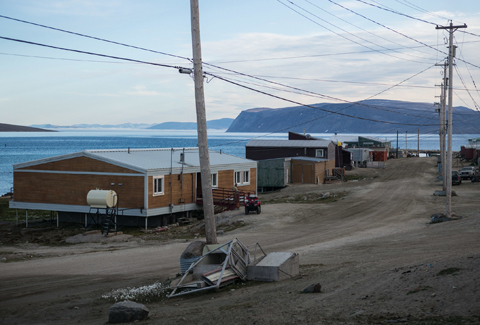
Clyde River community (Credit: Greenpeace).
The Arctic's Baffin Bay and Davis Strait region is home to seals, bowhead whales, polar bears and up to 90 per cent of the world's narwhals. The area's marine waters also provide habitat for 116 species of fish, such as Arctic char, an important dietary staple for Nunavut's Inuit communities.
Although the area is crucial to Inuit for hunting and other traditional activities, the federal government has approved underwater seismic blasting by a consortium of energy companies. They plan to fire underwater cannons from boats to map the ocean floor for oil and gas deposits, in preparation for offshore drilling.
The blasting, approved by Canada's National Energy Board in 2014, is meeting fierce opposition. A lower court affirmed the NEB decision in 2015, claiming Inuit were adequately consulted on the project -- something Inuit dispute. To prevent destruction of their hunting grounds, the remote hamlet of Clyde River in Nunavut and the Nammautaq Hunters and Trappers Organization appealed to the Supreme Court of Canada, which agreed to hear the case later this year. A positive decision could halt seismic blasting and affirm the right of Indigenous peoples to decide their own future regarding resource development in their territories, which is central to the UN Declaration on the Rights of Indigenous Peoples, of which Canada is a signatory.
This case is in an isolated region. But the threat of massive development in yet another traditional territory is not an isolated case. Indigenous peoples are on the front lines of environmental change around the planet. Ever-expanding resource developments are degrading traditional territories that have sustained communities for millennia, from Arctic tundra to primeval rainforest to arid desert. They're criss-crossed with roads, transmission lines and pipelines, and pockmarked by pumpjacks, flare stacks and other infrastructure for drilling, fracking and strip-mining fossil fuels. Most developments proceed without consent from local communities and with minimal benefit to them in terms of jobs, training and economic prosperity.
Numerous studies show that Indigenous communities usually bear the brunt of resource development, from declining water quality to destruction of traditional hunting and fishing grounds. The social consequences are devastating. Earlier this year I participated in the Canadian Indigenous Health Conference, which brought public health experts together with Indigenous elders, political leaders, youth, hunters and trappers. Many First Nations, Métis and Inuit communities' social problems -- including alcoholism, physical abuse, depression and suicide -- are linked to the vacuum left when communities can no longer hunt, fish, trap, gather berries and otherwise live off their lands as their ancestors did.
Despite living in one the world's wealthiest countries, Inuit face chronic food insecurity. Nearly 70 per cent of households in communities like Clyde River struggle with getting enough nutrition to stay healthy, compared to eight per cent for the country as a whole.
Traditional activities like hunting and fishing are critical to Indigenous communities' food security, but they also support a holistic approach to the overall health and well-being of Indigenous peoples. A David Suzuki Foundation study on the importance of caribou hunting to First Nations in the boreal forest found "harvesting as a practice is not solely a process of obtaining meat for nutrition. With each hunt a deliberate set of relationships and protocols is awakened and reinforced. These include reciprocity, social cohesion, spirituality and the passing on of knowledge to future generations."
Scientists fear high-intensity sounds from seismic blasting in the Arctic could adversely affect marine wildlife, exacerbating the food-insecurity crisis. Inuit hunters have observed altered migration patterns of some species, and reported horrific damage to the internal organs of seals and other animals exposed to underwater seismic blasts.
Clyde River's resistance to big oil is classic David versus Goliath. On one side, powerful corporations with money and access to politicians. On the other, one of the world's oldest cultures, which has survived for millennia in harmony with the environment. Former Clyde River mayor Jerry Natanine said, "Inuit do not live on the land; we are part of it. We form an indivisible unity with the Arctic environment that we are fighting to preserve for our people and our culture to survive and thrive."
Let's stand with Inuit and stop seismic blasting in the Canadian Arctic.
Hey! Want more DSF? Join David Suzuki on Facebook

August 16, 2016
David Suzuki Foundation's Olympics campaign lives on in Rio

Credit: Fernando Frazão/Agência Brasil
Last night, while watching the Rio 2016 Olympics, I was reminded that the David Suzuki Foundation's work can sometimes have unexpected ripple effects. A case in point: DSF's 2010 Olympics campaign, and how it's influenced subsequent Olympics, large companies and even governments.
Our goal in 2010 was to not only make the Vancouver Olympics carbon-neutral (i.e., no net climate impact), but to use the unparalleled platform of the games to inspire Canadians -- as well as a global audience numbering in the billions -- with climate solutions.
We started our campaign by conducting a detailed forecast of the greenhouse gas emissions from the Vancouver Olympics. Based on this information, we made a number of recommendations to the Olympic organizing committee, VANOC, about why they should make the event carbon-neutral.
We also published research showing that winter sporting events may not even be feasible if we don't do something about climate change. The report appeared prescient in light of an unusually mild winter that left the ski slopes bare during the games, requiring snow to be brought in by truck.
One of the highlights of our campaign was launching the Play It Cool partnership with more than 70 NHL and Olympic athletes, all of whom voluntarily reduced their own climate impact. Together we called on VANOC to up its game around climate change.
As a direct result of these efforts, the 2010 Winter Olympics set several important precedents with respect to measuring, reducing and mitigating climate impacts. For example, instead of just tracking emissions during the few weeks around the actual games (as Salt Lake City and Turin did), VANOC looked at the entire seven years of its operations after winning the bid. They also included emissions sources that are typically ignored, such as from the construction of venues and spectator air travel (usually the largest source by far). Vancouver was also the first Olympics to select an official carbon offset sponsor, and to make its torch relay and all athlete travel carbon-neutral. VANOC also made some effort to engage its sponsors and the public around climate solutions.
In the end, we awarded the 2010 Olympics a bronze medal for its environmental performance, as we believed VANOC could have done more to raise the profile of climate change. Our news release was covered by media outlets from around the world, demonstrating a growing public expectation that large organizations and events should take responsibility for their climate impacts.
Although our campaign focused on the 2010 Winter Games, it's had a much broader influence. Several major 2010 Olympic sponsors became carbon-neutral. The Olympic host province of British Columbia also used the games' example to become the first jurisdiction in North America to make all of its operations carbon-neutral in 2010, and now the Government of Canada is considering following suit. Many of the sustainability initiatives we called for in Vancouver have since been implemented at subsequent Olympics, including Rio.
Rio 2016 has itself raised the bar further by looking at the emissions associated with producing souvenirs, food and other games-related products. Significantly, the opening ceremony put climate change front and centre. As the Rio organizers noted, "Vancouver 2010 showed the importance of engaging people to adopt more sustainable behaviour in their daily lives."
The Olympics has made a lot of progress in reducing its environmental footprint. It still has a long way to go. But all of us at DSF are proud of the role we played in raising the environmental bar for the Olympics staged in Vancouver, and that our work has lived on elsewhere.
Hey! Want more DSF? Join David Suzuki on Facebook

David Suzuki's Blog
- David Suzuki's profile
- 247 followers



